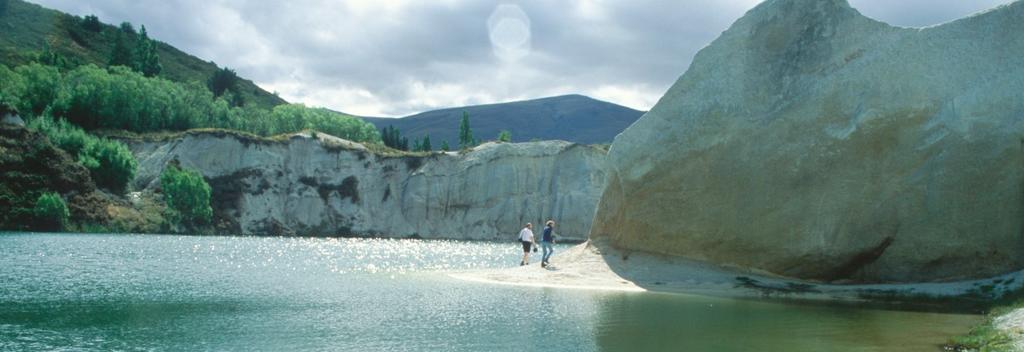-
Popular places to visit
Popular things to do
Helpful tips
Here's a few useful links to help with planning your trip to Aotearoa New Zealand.
-


Lose track of time in a quaint historic town that's barely changed since the gold rush days. Stay overnight in the hotel, if you dare.
In 1887, Saint Bathans was a bustling town with around 2,000 miners living in the immediate vicinity. Some of the buildings from that era remain today and little else has been added since, so it's very easy to imagine the town as it was during the gold rush.
The Vulcan Hotel, built in 1882, is a fine example of mud-brick construction. It's a great place to share tall stories over an ale or two, and offers meals and a small amount of comfortable accommodation. Overnighters should be aware that many people believe this fine public house has a resident ghost. The two-storey kauri (native hardwood) Post Office that opened in 1909 is also still in operation. Other historic buildings include the mud-brick Anglican Church built in 1882 and the stone school house.
Close to the town, the Blue Lake was created by extensive mining activity. Beginning in 1864, miners chipped and sluiced their way through the quartz rock of the 120 metre high Kildare Hill. By 1933 the hill had become a 168 metre deep pit. From the 1880s the miners used hydraulic lift technology, like a giant vacuum cleaner, to suck water and gravel out of the pit to where it could be worked for gold.
Mining was halted in 1934 because the sides of the pit were getting too close to the town. The huge hole was allowed to fill with water to create today's beautiful lake. The minerals in the surrounding rocks give the water an astonishing blue colour which is offset by surrounding columns of white quartz tailings.